#ancient tradition
Text

The Sun and Moon Pagodas in Guilin, China (photo by Nathan Ackley)
Sun & Moon Twin Pagodas are one of the greatest attractions in Guilin, situated in Shanhu (Shan Lake).
The word sun and moon in Chinese character written together meant brightness. They are also known as Gold and Silver Pagodas because of their colors at night. They stand next to each other reflecting the beauty of each other.
Originally built in Guilin's moat during the Tang dynasty, these tiered towers were reconstructed in 2001 and now they are a tourist site combining culture, art, religion, and architecture, technology, and natural landscape.
The "Sun" Pagoda is constructed with copper; it has 9 floors and reaches a height of 41 metres. The "Moon" Pagoda's construction is made of marble; it has 7 floors and measuring 35 meters high. The two pagodas are connected via a tunnel at the bottom of the lake.
From the Moon Pagoda to the Sun Pagoda, there is a 10-meter glass tunnel that links the two under water. When walking through the tunnel, one can see the fish above the head and on both sides.
#sun and moon pagoda#china#chinese architecture#asian architecture#asia#chinese culture#asian culture#pagoda architecture#pagoda#buddhism#tang dynasty#photography#aesthetic#religion#asian religion#chinese religion#ancient china#ancient tradition#sun and moon
1K notes
·
View notes
Text


The Chair has an established history
31 notes
·
View notes
Text
“The highest reward for a person’s toil is not what they get for it, but what they become of it.” – John Ruskin
1 note
·
View note
Photo

Face tattoos and our changing perception of an ancient tradition
Stephanie Big Eagle
Photographer: Lucas Zhao

#stephanie big eagle#native american#face tattoos#tattoo#art#body art#sioux#culture#ancient tradition
6 notes
·
View notes
Text
Let’s Celebrate Imbolc!
* Happy Imbolc and Brigid’s Day on February 1st! The Wheel of Time keeps turning!Let’s celebrate Imbolc, an ancient Celtic tradition that marks the …Let’s Celebrate Imbolc!

View On WordPress
0 notes
Text
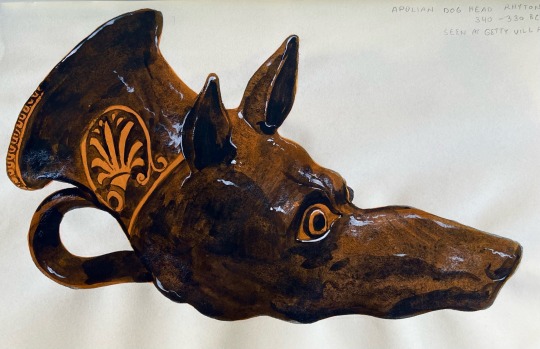

Apulian rhytons in the shape of animal heads (340ish, BCE)
#sketchbook#traditional painting#illustration#painting#art#acryla gouache#gouache#ancient greek art#ancient greece
6K notes
·
View notes
Text
Kalash Valley Chelam Joshi Festival
Kalash Valley is a unique and picturesque place located in the northwest of Pakistan. It is known for its colorful culture and traditions, which are rooted in ancient history. One of the most fascinating festivals celebrated by the Kalasha people is Chelam Joshi, which is held in mid-May. This festival is a symbol of the arrival of spring and is celebrated with great fervor and enthusiasm. In…
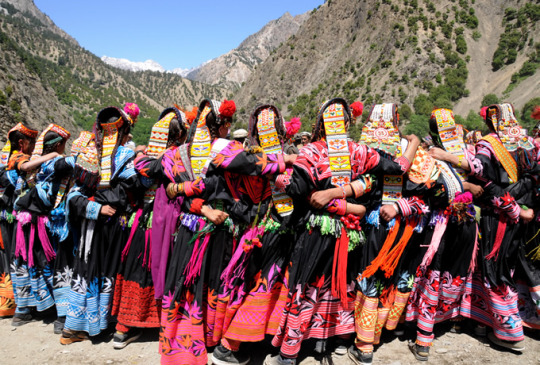
View On WordPress
#adventure tourism Asia#ancient tradition#Asia tourism#bonfire#bountiful harvest#budget travel Asia#celebrations#Chelam Joshi Festival#cultural experiences in Asia#culture#customs#dance#diversity#eco-tourism Asia#ethnic group#evil spirits#family-friendly destinations in Asia#food tourism Asia#goddesses#gods#harvest#heritage#historical sites in Asia#island hopping Asia#Kalash Valley#Khyber Pakhtunkhwa#luxury travel Asia#mainstream Muslim population#mountains#new crop season
0 notes
Text

#Ides of march#Beware the ides of march#Ancient Rome#March 15#Tumblr traditions#Julius Caesar#Rome emperors#Funny#Stabby#Joke#Literature#Dark academia#Aesthetic#Viral#Hilarious#History#Ancient History#Pi day#Pie
496 notes
·
View notes
Text

Sketchbook drawing for Heracles and the Argonauts. Need to draw more Heracles honestly.
#art#sketch#drawing#illustration#design#gay art#male#traditional illustration#comics#concept art#mythology#my art#fantasy art#art history#ancient greece#greek tumblr#greek mythology#heracles#male art#hero#demigods
791 notes
·
View notes
Text



The Veil is thin tonight-
-Can you feel it on your skin?
Tingling?
Ink and fineliner on paper
Available as Print
#Solas and Lavellan siting in a tree... uh window#k i s s i n g#Kidding. They are only sharing longing looks while playing with mage lights#while Solas is trying to distract her by slowly caressing her ankle with his thumb because ofcourse he has some ancient tricks up his sleev#He likes to see how the light fragments stick to Lavellan's hair. Like the stars are part of her#like like she is his sky and universe#He entertains her with tales of the lights that use to dance through the sky in Arlathan. Wondering what she would think of all the colors#He would have loved to paint her in that moment. Her eyes brighter and more mesmerizing than any aurora borealis#But they didn't have forever#The first signs of dawn were slowly creeping over the horizon. And with it the promise of new challenges#more quests and piles of paperwork#Courtesy of Josie#solasmance#solavellan#solavellan hell#solas dragon age#inquisitor lavellan#solas x lavellan#solavellan art#dragon age#dragon age fanart#dragon age inquisition#da fanart#da art#fanart#traditional media#da: dreadwolf#solas romance#Daze Chroma#my art
373 notes
·
View notes
Text




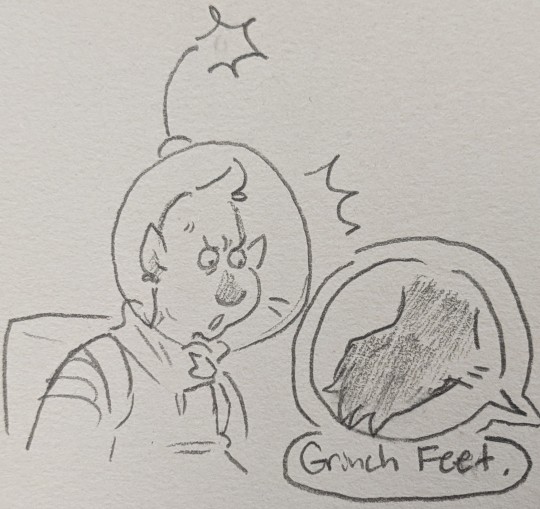

Dog the size of a guinea pig and smells like sour carpet
611 notes
·
View notes
Text
I stg if I see one more "Justice for medusa's TRUE story!" post I'm gonna kill someone.
(TW: Assault mention)
The medusa is assaulted by posidon then cursed by athena for being assaulted in her temple only appears in Ovid's Metamorphoses, which is written as a purposeful subversion of Greco-roman myths. most are reframed or rewritten from just kinda a thing that exists or a black and white moral tale of why you shouldn't be hubristic to full on tragedies on the part of the person often getting their comeuppance or the monster. Heck in book 13 we get a love story starring Polyphemus, the cyclops from the Odyssey.
In general mythology, Medusa is just another monster. Ovid revises the myth to turn it into a tragedy. I absolutely love ovid's work, he does so many clever things with the myths, but for the love of the gods its the furthest from the real version you can get
#And yeah obviously its greek mythology so theres no set canon and you can kind of pick and choose tellings#but Ovid's one isn't a tradition of belief its just literature#its damn good literature but in terms of religion its like claiming good omens is part of the christian canon#classics#ancient history#tagamemnon#ancient rome#greek mythology#medusa#ovid#latin literature#ancient greece#mythology
407 notes
·
View notes
Text
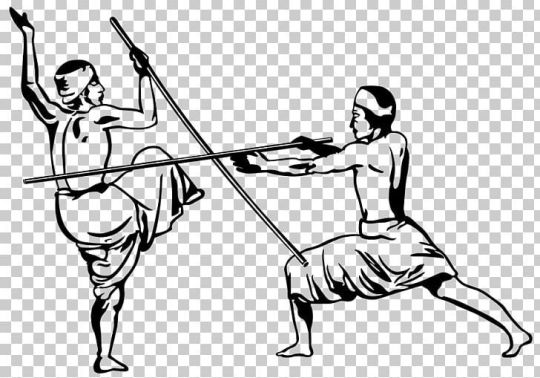
What is Silambam ?
Silambam is a traditional Indian martial art that originated in the southern Indian state of Tamil Nadu. It is one of the oldest martial arts practiced in India and has a rich history dating back thousands of years. Silambam is known for its use of a long staff, typically made of bamboo or rattan, called a "silambam."
Key aspects of Silambam include:
Weapon-Based: Silambam primarily revolves around the use of a staff, although practitioners may also incorporate other weapons such as swords, knives, and sticks into their training.
Physical Conditioning: Training in Silambam involves rigorous physical exercises to improve strength, flexibility, stamina, and coordination. Practitioners often engage in various drills and routines to develop their skills.
Techniques: Silambam encompasses a wide range of techniques including striking, blocking, thrusting, and grappling maneuvers. These techniques are often practiced in both solo and partner drills.
Footwork: Footwork is a crucial aspect of Silambam, as it enables practitioners to move efficiently and effectively during combat. Various stepping patterns are taught to enhance mobility and balance.
Forms (Katas): Silambam incorporates a series of choreographed movements known as "katas" or "pattas." These forms help practitioners to develop muscle memory, precision, and fluidity in their movements.
Philosophy: Like many martial arts, Silambam is not just about physical techniques but also emphasizes mental discipline, self-control, and respect for others. It often incorporates aspects of Hindu philosophy and spirituality.
Cultural Significance: Silambam is deeply rooted in Indian culture and history, with references to it found in ancient texts, folklore, and traditional art forms. It has been passed down through generations and continues to be practiced and celebrated in various parts of India.
Overall, Silambam is not only a martial art but also a cultural heritage that promotes physical fitness, mental discipline, and a connection to India's rich cultural traditions.
0 notes
Text
One of the funniest forms of religion-focused antisemitism to me is when people take issue with Jewish observance for being "archaic" or "stuck in the past" — and then most of the examples they cite are things that set us apart but have absolutely nothing to do with time period.
Like... guys, I'm pretty sure people who lived centuries ago thought keeping kosher was just as weird as you think it is now. This is not the innovative modern take that you think it is.
Sometimes cultural practices in the same era are just different. That's okay.
#jumblr#judaism#orthodox judaism#antisemitism#dandelion says#jewish dandelion#judaism is an ancient tradition#and so is prejudice against judaism#so if I'm stuck in the past then I guess you are too
1K notes
·
View notes
Text
[Hanfu · 漢服]Chinese Tang Dynasty(618-907A.D)Woman Officer Hanfu Refer to Tang Dynasty Stone Coffin Line Carving




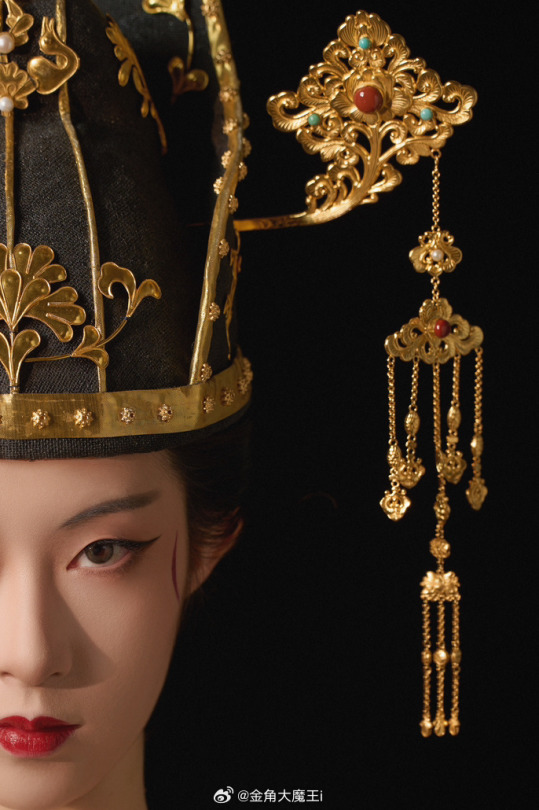


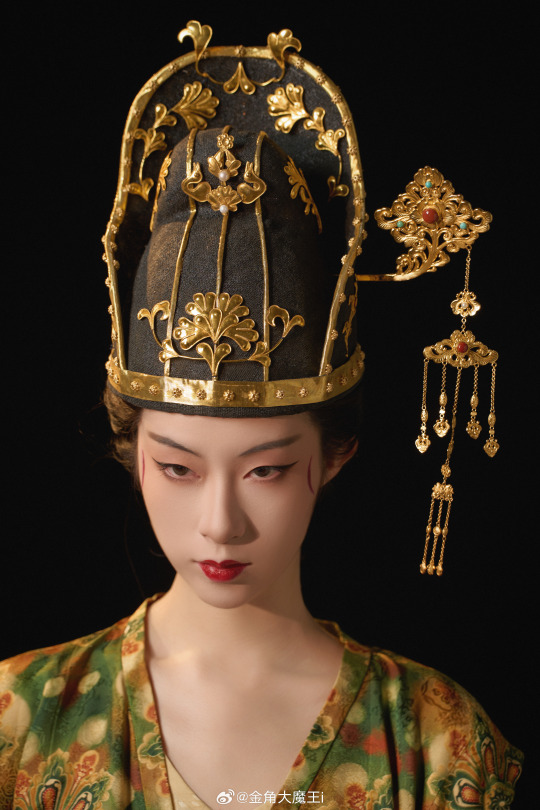

【Historical Artifacts Reference 】:
China Tang Dynasty Tomb of Wei Shiqiniang's Stone Coffin Line Carving/韦十七娘石椁线刻
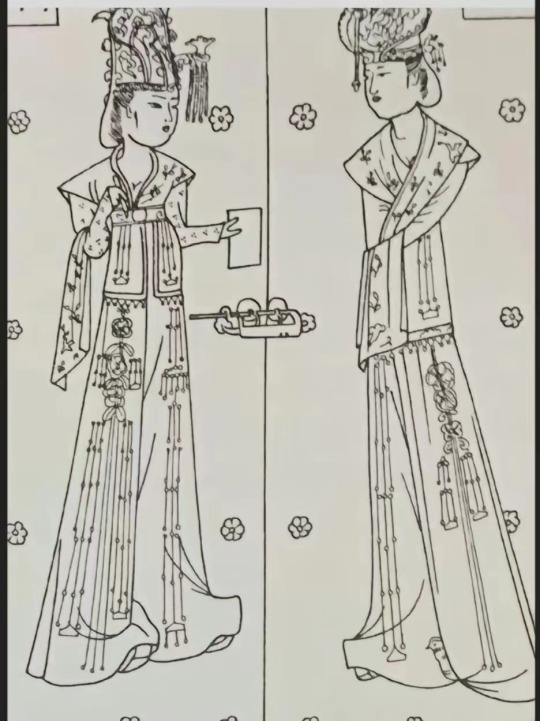
Showing Tang Dynasty Woman Officer In WuZetian (690–705)period
武周女官
————————
📸Recreation Work: @金角大魔王i
👗Hanfu: @山涧服饰
🔗Weibo:https://weibo.com/1763668330/NDuAoFtZz
————————
#chinese hanfu#Tang Dynasty(618-907A.D)#hanfu#hanfu accessories#hanfu_challenge#chinese traditional clothing#china#chinese#hanfu history#Woman Officer#武周女官#漢服#汉服#chinese historical makeup#chinese historical fashion#chinese history#ancient china#imperial china
312 notes
·
View notes
Text
Can we talk about Juno Zeta?
You're living the dream, Master Archivist of the Sixth House. The Archaeology department hates you. The secretaries love you. Your son has risen to the very top of the absolutely unproblematic meritocracy of the House to become Master Warden. Sure, you treated him as a colleague when he was 7 too, but this is much more intellectually satisfying and much better for your publication record (suck it, Archeo). You sit on the Oversight Body, making decisions for the 3 million strong House of the Sixth.
Then the Master Warden gets summoned by god to become a Lyctor. (No civilian has seen a Lyctor for thousands of years. But the information you do have speaks of astonishing power. Are you intrigued? Do you regard it as an even more stellar opportunity for the Master Warden? Do Lyctors have access to interesting material for the archives? Does the possibility of your son becoming an immortal finger and gesture of god ever feel strange?)
A few months later, some fragments come back in a box. There's nothing left of Camilla at all. No one will tell you anything. Every House but the Third and the Ninth has lost its head or heir (the poor girl your son loved is dead. You're never going to get another overly-formal letter from the Fifth begging for Lyctoral documents from your archive.)
Then the Master Warden makes contact from beyond the grave to tell you that the saintly founder of your House left a plan in place in case it ever became necessary to betray god. He tells you why god should be betrayed.
Suddenly, the Oversight Body has to make a decision. To take your home and 3 million people away from the Dominicus System (away from its thanergetic soil, no more necromancers will ever be born). To break the contract of tenderness made on the day of the Resurrection. Do you have time to call back your soldiers in the Cohort? Do you have to leave them behind? Has the Oversight Body ever felt unanimously about something before? And how frank can you be with the House? You have visiting scholars from almost every House, and who knows where the Bureau have eyes and ears.
There are calculations to make. How to transport a whole House? How do you work out that it takes five hundred and thirty-two obselisks? That there are deleterious effects past five hundred and sixty? How do you find a stele that would anchor such a big thanergy transition? (Only the Fifth make stele. Do you try to do it yourselves? Who do you trust on the Fifth to help with that? Is that why Kester Cinque left Koniortos?)
The Master Warden, who is dead, lives inside the body of Camilla, who is not. He picks you - in your capacity as Master Archivist - to be one of the negotiators. How do you integrate 3 million people into a completely alien society with whom your people have been at war for millennia? How does negotiating with terrorists feel compared to academic committees?
What happens then? One day you just...lose it? The sun rises too bright and too blue and you are in agony, unconnected from yourself, screaming and writhing. And when the thing in the sky is at its furthest orbit from you, in some exhausted moment of clarity, you nearly kill yourself using necromancy to restore your sanity. You blind yourself. Do you think beyond that moment? As someone who deals in documents and artefacts and forms in triplicate, do you mourn your sight alongside everything else you have lost? Your son, your home, your god, your sanity...
And now you are a hostage. Sixteen of you in the back of a sweltering truck, held at gunpoint, always moving. The only thing keeping you alive is the possibility of selling you back to the empire that you've betrayed. Your captors have signed a 'no torture' clause, and perhaps they do stick to that. You're needed for providing proof of life and are probably better off than most. But it's too hot, there's not enough water, you can't see, and the only way out is either that the Master Warden gives Blood of Eden a Lyctor or being released to the mercies of the Kindly Prince. You sit in the dark and do mental maths with each other to stay sane.
Somehow, the Master Warden has done it. Without a Lyctor, he's turned his own cell commander against her fellows and you have been released. Most of the Oversight Body can't even walk out of the truck without help. But you're free, and the Master Warden - now in the stolen body of a Lyctor's cavalier - has the sort of mad scheme only he could come up with. Those mental maths will come in handy. The cell commander isn't bad either...
You can't see your son die again (the last time he speaks to you, from that borrowed body, he calls you 'mum' instead of 'Master Archivist'). But you can smell Camilla’s flesh burn. Perhaps the Commander, holding your arm, describes it to you. You follow this new person, your child, now something else, back into the truck where you were held captive and watch as they drive it into the River.
The Tomb is open. Your child is part of a being of strange and unimaginable power. The House Formerly Known as Sixth is on the other side of the universe. You are on the Ninth with a dead cavalier in the body of her necromancer, the Emperor’s construct, legions of demons, and a very mysterious dog...
Anyway, I'm very excited to see what havoc Juno gets to cause in ATN. She's there to be snarky, do psychometry, and be a romanceable MILF. Let her yell at god. And for goodness sake, let her get some peace at the end.
#the locked tomb#tlt meta#juno zeta#The ATN wedding is Juno and We Suffer right?#They get married in accordance with an ancient and solemn old earth tradition (by an Elvis impersonator).#Noodle is the ringbearer.
272 notes
·
View notes